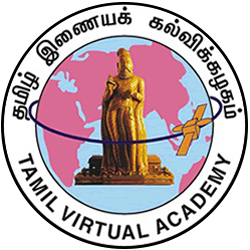Primary tabs
-

This section explains how the name பரத நாட்டியம் has been derived and what it means. பரத implies a combination or confluence of பாவம் or expression of emotion , இராகம் or melody and தாளம் or rhythm. A நாட்டியம் or dance where all these aesthetic elements cohere is பரத நாட்டியம்.
The origins of பரத நாட்டியம் are in the ancient Tamil dance forms of கூத்து, ஆடல், நாட்டியம் and நாடகம். The ancient Tamil texts contain descriptions of the classical dance performances of the legendary court dancer மாதவி.
The temple dances of Tamil Nadu in ancient times are another predecessor to பரத நாட்டியம். The credit for the preservation and nurturing of this dance form goes to Raja Raja Chola-I who accorded royal patronage in the form of establishment of a colony for dancers near the Big Temple in தஞ்சாவூர் and encouragement to expert dancers.
The tradition of temple and court dancing which flourished under royal patronage became an art for public performance in the 19th century with the efforts of the தஞ்சாவூர் Quartet comprising the brothers சின்னையா, பொன்னையா, சிவானந்தம் and வடிவேலு. The principles laid down by them became the guidelines for future generations of dancers.


